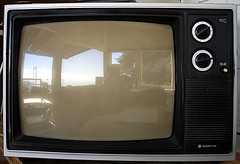Google TV, Apple TV, & Roku's Biggest Enemy: A lack of Internet Bandwidth


So, which is the best? That's a question for another day. My concern today is that for any of these to work they need a serious Internet broadband connection. You may have one today--I currently have a 20Mbps cable connection--but what happens when everyone needs one and when ISPs start placing bandwidth caps on home accounts?
Many ISPs, such as Comcast, Charter, and Cox, already have bandwidth caps ranging from 20GBps to 250GBs (GigaBytes). I suspect all the rest will add them soon. Now, 250GBs may sound like a lot and it is-it's 50 million emails (at 0.05 KB/email); 62,500 songs downloads (at 4 MB/song) or 125 standard-definition (SD) movies (at 2 GB/movie)--but since Internet TV devices use streaming video and HD video takes up a lot of bandwidth I see trouble ahead.
Here's how the math of Internet TV works. First, all Internet video is highly compressed. It has to be. Raw or lightly compressed with MPEG2 Over the Air (OTA) video for ordinary old 480i TV takes up an average of 2.5Mbps; 720p/1080i OTA HD averages around 15Mbps. 1080p, which you only really get from Blu-Ray players, takes up 40Mbps.
Cable is the most common kind of broadband that can deliver a fast enough connection for Internet TV. The technology that the fastest cable uses, Data Over Cable Service Interface Specification (DOCSIS) 3.0, can share up to 304Mbps between 50 to 400 customers.
The average U.S. Internet connection in 2009 was a mere 5.1Mbps. That placed the U.S. a dismal 29th in the world. This does not bode well for Internet video quality.
OK, so by now you've figured out that you're not going to get high-quality HDTV over the vast majority of Internet connections during prime-time. The video companies figured that out long before you did. That's why all Internet TV providers use lossy video compression codecs such as H.264, VC-1 or MP4. With these codecs in use, typical 720p HDTV Internet TV bandwidth requirements are Apple TV with 4Mbps; Hulu at 2.5Mbps; and Netflix at 5Mbps.
All of these are watchable, but if you're a videophile, you're not going to be happy. To show 720p video the video providers set their video codecs to throw out a lot of data. This can be downright painful to watch if you have a trained eye and you're watching a movie with a lot of action or complex imagery. If you have an 'average' connection, it still means you're likely to see video-stuttering and other artifacts of bandwidth starvation that doesn't require an expert eye to spot.
It's not going to get better. Even if you're lucky enough to have FiOS with its 620Mbps per 32-user capacity, the video providers aren't, and probably couldn't if they wanted to, providing higher-quality video for these users. I think both the video content companies and the ISPs are going to have their hands full delivering enough bandwidth to just keep the flood of new Apple TV users happy, never-mind everyone else.
I love the idea of kissing my cable TV bill good-bye, and I probably will soon with the arrival of Hulu Plus. I also know though that, even though Internet devices like the Google TV-compatible Logitech Revue are making it easier than ever to view TV over the Internet, Internet bandwidth caps and shortages will keep Internet TV's quality low.